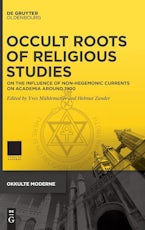
Educating about Religious Diversity and Interfaith Engagement
A Handbook for Student Affairs
Edited by: Kathleen M. Goodman, Mary Ellen Giess and Eboo Patel
324 Pages
- Paperback
- ISBN: 9781620366097
- Published By: Stylus Publishing, LLC
- Published: February 2019
$35.00
Educating about Religious Diversity and Interfaith Engagement: A Handbook for Student Affairs is a practical guide with resources for interfaith professionals and university administrators in student affairs. It is organized in five parts and provides a set of guidelines to engage with the different worldviews of students in academic courses and programs in the United States. It requires a familiarity with the religious and spiritual diversity on North American campuses, as the strategies, activities, and case studies suggested are based on such realities.
One of the purposes of this book is to learn possible approaches to involve students in social justice and collaboration, as stated by Eboo Patel and Cassie Meyer: “We believe that religious pluralism, which is the interaction of individuals with different religious identities and perspectives, can be best achieved through interfaith cooperation” (47). While examining the risks and challenges of this cooperation, such as insensitivity on campus and mistreatment of some groups (34), the contributors express the hope that students who do not have the opportunity to share their stories can find a safe place for support and spiritual expression.
Interfaith work in higher education and academic study of religion in the United States can rely on advancing research based on the development of multiple surveys, which ensure a constant monitoring and evaluation process. The research carried out in this field led to the development of questions for critical reflection and improvement of the courses offered (37–38).
Part 2 of the book gives further ideas for courses on spirituality, religion, and secularity. These topics are integral, as “they are the backdrop for who we are, how we view the world, how we were raised, what we are committed to, and what we value and believe” (63). Learning about the steps followed in the successful development of these courses and finding tips on readings and possible assignments (69–70) constitutes an inspiration for other faculty looking for recommendations and texts suggestions. The exploration of activities and different scenarios is essential to have a concrete idea of engagement in controversial dialogue.
Part 3 and 4 suggest models to implement worldview identity workshops and case studies that should be adapted to the group’s diversity, the availability of spaces, and financial resources. They are effective educational tools, and it is possible to find clear examples of how to use them (161). However, it is important to be aware that they only reflect some specific experiences of a determined geographic and social context and are not exhaustive. The implementation in different environments than the ones for which they were thought could require several adjustments, or in some cases they might be not applicable in another reality with a completely different interfaith background than the American one.
The fifth and last part of the book presents an overview of the religious traditions commonly found on American college campuses, and it encourages educators to study them to better support students. The overview is helpful especially for what concerns additional resources and the mention of nondiscrimination policies and religious belief criteria adopted in some circumstances (222–223). Furthermore, it is possible to find recommendations on how to relate to students in respect of their traditions (243) and the deconstruction of myths which prevents from understanding the different worldviews of students.
The inclusion of a chapter on understanding secular students on campus provides some insights on the experiences of some major groupings of the nonreligious, who often experience the negative consequences of the predominance of theonormativism (heavy normalization of theism) in the society (269). Being nonreligious can be challenging for students in the face of crisis or trauma and they need a particular attention in these situations (272). It is essential to have interfaith professionals who are aware of the danger to make assumptions on what is religious and what is not and to avoid stereotypes which could prevent from understanding such a rich diversity as a possibility of growth in the educational community.
Claudia Giampietro is a canon lawyer and intercultural and interreligious mediator based in Rome, Italy.
Claudia GiampietroDate Of Review:August 9, 2021
Kathleen M. Goodman is Assistant Professor of Student Affairs in Higher Education at Miami University.
Mary Ellen Giess is Senior Director of Co-Curricular Partnerships at Interfaith Youth Core.
Eboo Patel is Founder and President at Interfaith Youth Core.











